
views
Making a Simple Pendulum
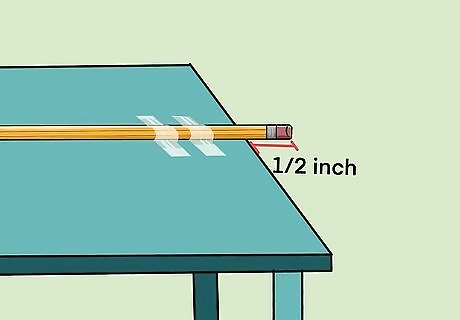
Tape a pencil horizontally to the top of a table. Lay a pencil on its side and use clear tape to firmly fasten it to a tabletop. Leave about ⁄2 inch (1.3 cm) of the pencil hanging over the edge. The pencil will anchor your pendulum and keep it from falling down, so be sure to use enough tape to secure it and keep it from moving around. Test the pencil by flicking it with your finger. It should stay stuck to the tabletop.

Tie a loop about 1 inch (2.5 cm) in diameter at one end of a string. Take a length of string 2–3 feet (0.61–0.91 m) long and curl one end to form a loop. The loop needs to fit around the pencil, but not too tight or it won’t swing properly. Tie a knot with the loop to keep it from coming undone. Slide the loop onto the pencil and slide it off to make sure it’s not too tight.

Make a small ⁄2 inch (1.3 cm) hook with a metal wire. Take a 2 in (5.1 cm) length of metal wire and curl one end of it into a “J” shape to form your hook. The hook will hold the weight that swings the pendulum so shape your hook so it’s easy to attach and remove nuts onto it to alter the weight of the pendulum. You can use pliers to curl the metal wire.
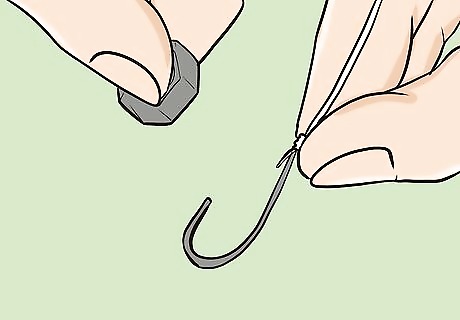
Slide a ⁄4 inch (0.64 cm) nut onto the end of the hook. Use a standard metallic nut as the weight for your pendulum. The hole in the center makes a nut ideal for sliding onto the hook, and you can easily add or remove nuts to experiment with different weights. Slide the nut onto the hook so that it’s not able to fall or slide off when the pendulum swings. Do not close the hook around the nut.Tip: Use nuts of the same size and weight so you can experiment with changing the weight to see how it affects the swing of the pendulum.
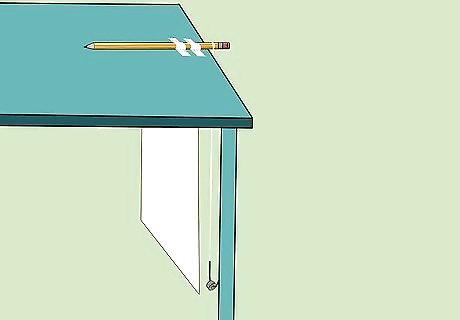
Tape a piece of paper on a wall or table behind the hook. You can use the paper to mark where you release the pendulum each time so you can see the way the pendulum behaves and swings based on where you release it. Tape the paper so that it is a backdrop behind the hook with the nut on it. Any color paper is fine, as long as you can see the pencil markings.
Experimenting with the Pendulum
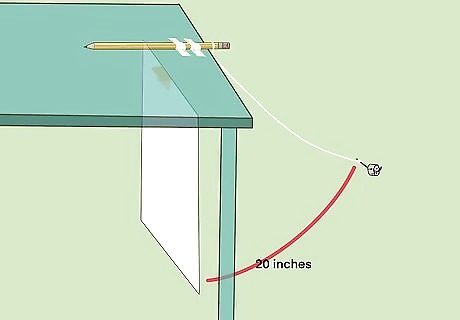
Pull the hook with the nut on it back about 20 inches (51 cm). Before you release it, use your pencil to mark on the paper taped behind the pendulum where you release it from. That way, you can repeat the experiment by letting the pendulum go from the same place each time. You need to have a consistent release point for accurate results in your experiments!
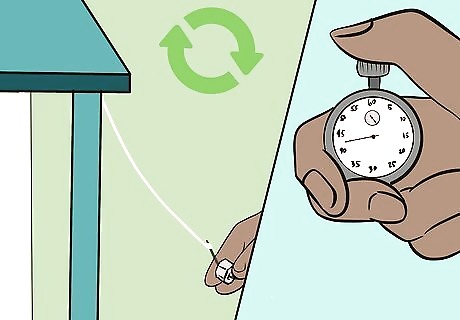
Release the pendulum and start a stopwatch. When you release the pendulum, count the number of oscillations, or the number of times it swings back and forth, for 1 minute. Repeat the process 5 times, releasing the pendulum from the same spot on the paper each time. Let the pendulum fall on its own; don’t swing or push it. Write down the number of oscillations so you can calculate an average.
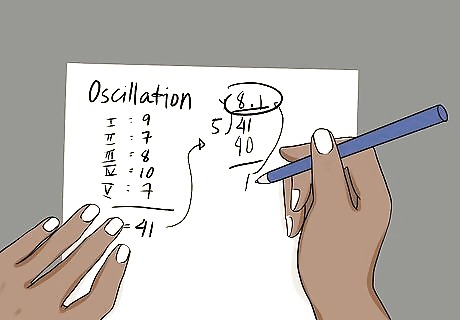
Calculate the average of the oscillations. Take the number of oscillations from each time you released the pendulum, add them all together, then divide the number by 5. This is the average number of oscillations the pendulum completes from that distance and at that weight.For example: If you release the pendulum 5 times, and the number of oscillations you get are 9, 7, 8, 10, and 7, add up all of the numbers to get 41. Divide 41 by 5 to get 8.2 as an average number of oscillations for that experiment.
Testing the Physics of a Pendulum

Add a nut to the hook to see what difference the mass makes. Add a second nut to the hook and bring the pendulum back to where you marked on the paper the first time. When you release the pendulum, start a stopwatch and count the number of oscillations for 1 minute. Repeat the process 5 times, then calculate your average. Notice the difference in the number of oscillations and the average between 1 nut on the hook and 2 nuts on the hook. Add another nut and repeat the experiment to see if even more mass will affect the pendulum’s oscillations.Spolier: Adding weight changes the mass of the pendulum, but mass doesn’t affect the swing rate of a pendulum, so your average number of oscillations should be almost the same, no matter the weight!
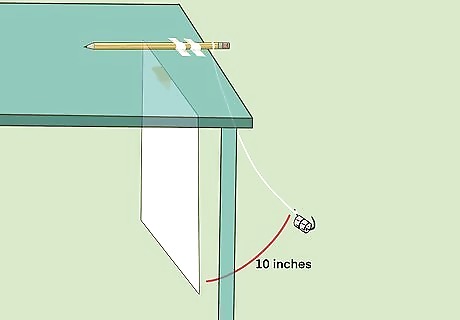
Change the distance to see how it affects the oscillations. Go back to just 1 nut on the hook, bring the string back about 10 inches (25 cm), and make a mark on the paper taped behind it so you can repeat the experiment from the same distance. Release the pendulum and count the number of oscillations for 1 minute. Repeat the process 5 times and calculate an average. You may be surprised to learn that the distance (also called amplitude) does not affect the swing rate, or number of oscillations. Try the experiment again from 5 inches (13 cm) and find the average number of oscillations to see how much of a difference the distance makes.

Cut off 10 inches (25 cm) of the string to see the effects. Slide the look off of the pencil and cut off 10 inches (25 cm) of string, tie another loop, and put it back on the pencil. Then bring the pendulum back about 10 inches (25 cm) and mark on the paper where you release it from. Repeat the experiment 5 times and find the average number of oscillations to see how the length of the string affects the pendulum. Cut off another 10 inches (25 cm) of string to see the difference it makes on the average number of oscillations. The length from which a pendulum is suspended helps determine the speed and regularity of the swings, which is why pendulums have been used to keep time.



















Comments
0 comment